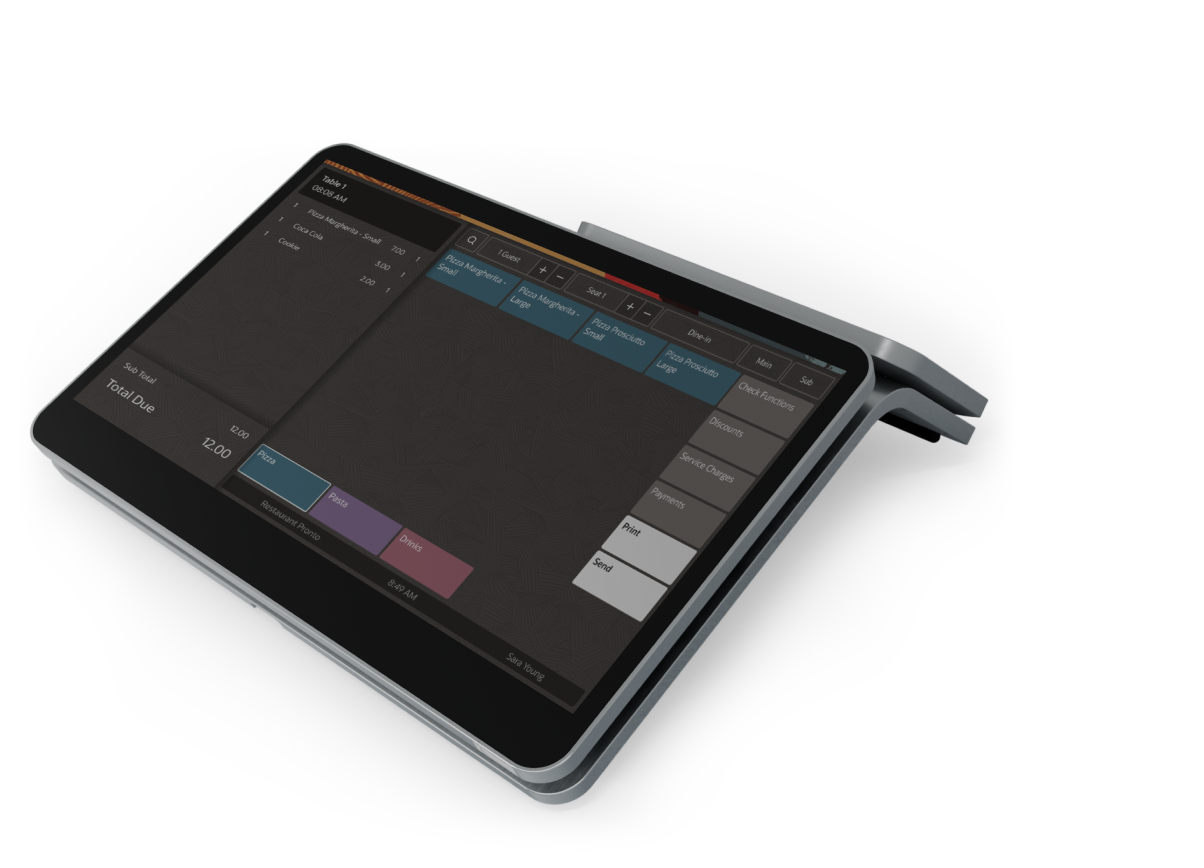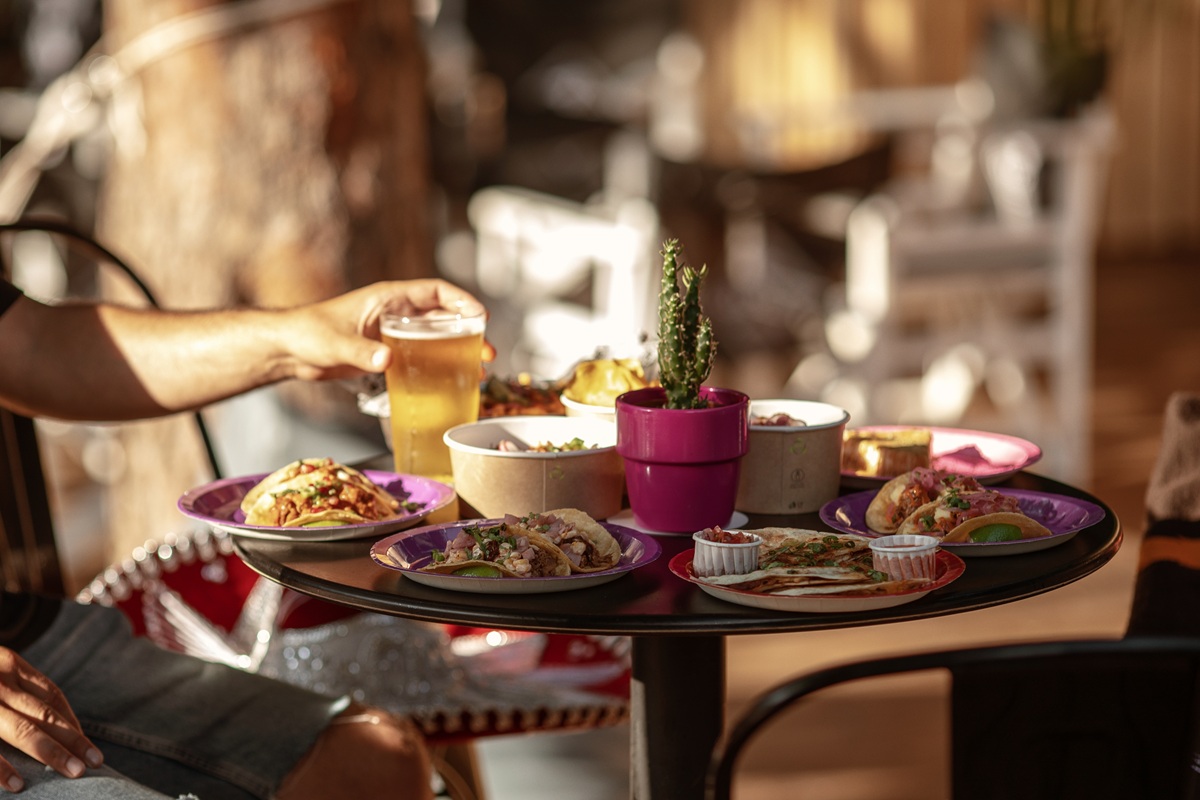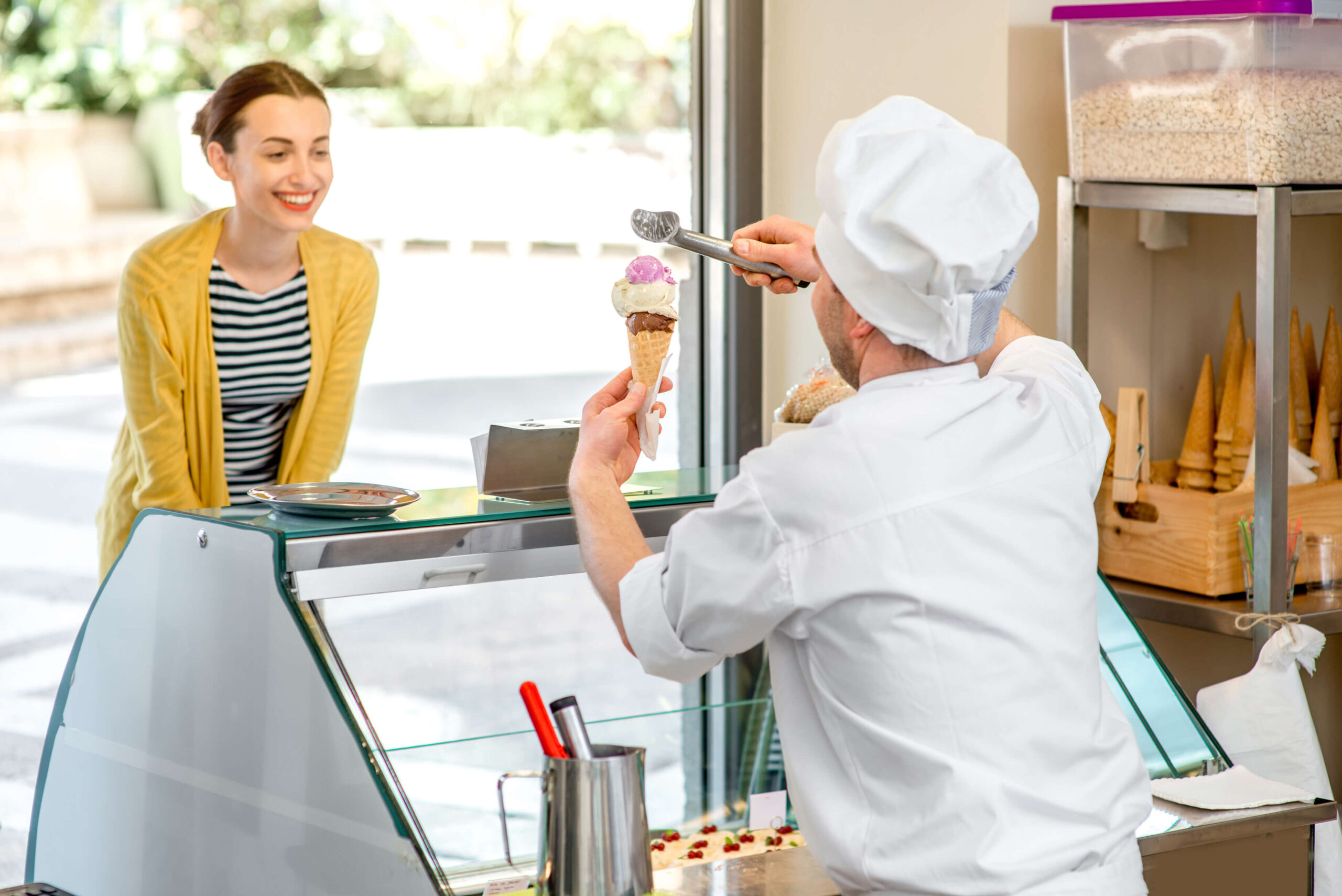- 1. Do market research and compile a solid business plan
- 2. Obtain financing
- 3. Find the perfect location
- 4. Acquire all the licenses and permits you need
- 5. Create a winning quick service restaurant menu
- 6. Get an affordable quick service restaurant POS
- 7. Hire a dream team
- 8. Purchase equipment and look for suppliers
- 9. Set up pickup and delivery options
- 10. Put together a comprehensive QSR marketing strategy
- Useful Resources
- Frequently Asked Questions
To start a quick service restaurant, you need to put together a strong business plan, get financing, find the perfect location, secure the licenses and permits you need, and prepare a marketing strategy.
Below, we’ll show you how to start a quick service restaurant, from the research phase to the marketing phase and everything in between. Let’s dive in!
What Is a Quick Service Restaurant?
A quick service restaurant, often abbreviated to QSR, is a restaurant serving affordable meals fast. This type of food business often has limited table service and packages food for takeaway.
The 4 types of quick service restaurants you most often come across are:
- Burger joints
- Sandwich shops
- Pizzerias
- Fried chicken shops
Quick service restaurant vs fast food restaurant
If you’ve ever wondered what the difference between a fast-food restaurant and a quick service one is, the answer is there is no difference.
QSR is the term used within the restaurant industry to refer to fast food restaurants.
Quick service restaurant characteristics
These are the main features characteristic of a quick service restaurant:
- Simple, short menus
- Low prices
- Limited seating
- No table service
- Long opening hours, often late into the night
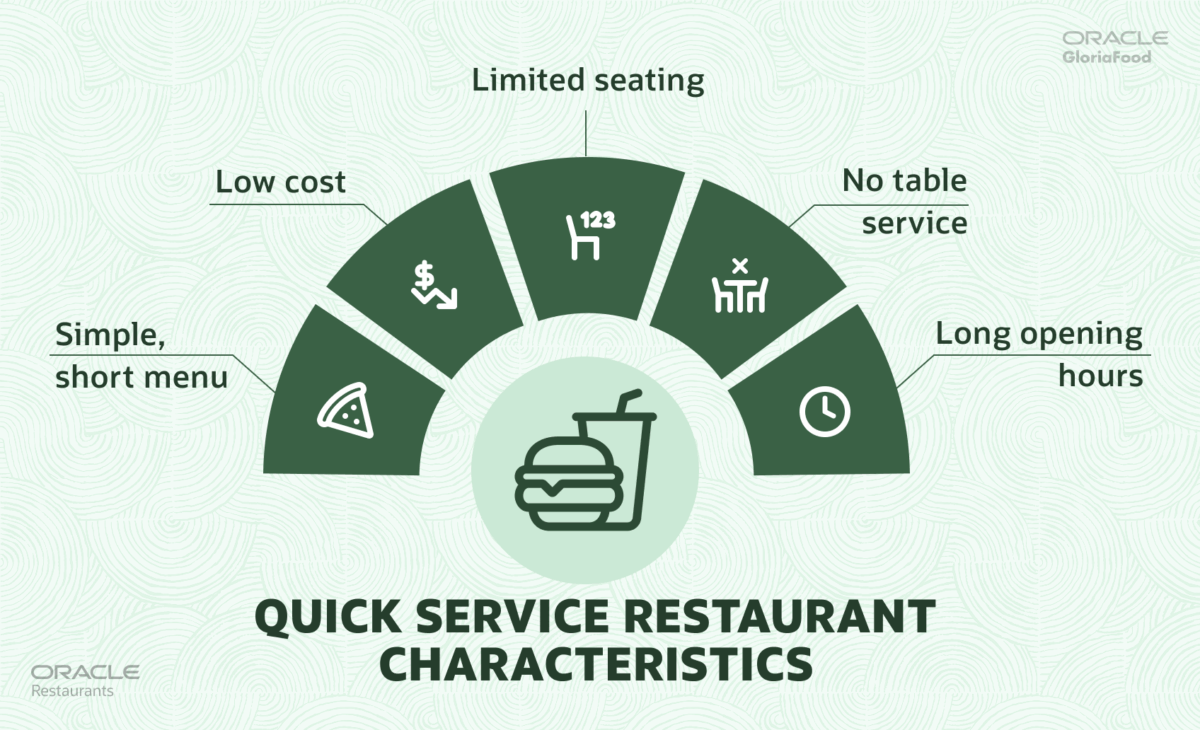
How to Start a Quick Service Restaurant in 10 Easy Steps
- Conduct market analysis and develop a comprehensive business plan;
- Secure funding;
- Identify the ideal location;
- Obtain the required licenses and permits;
- Craft an irresistible menu;
- Invest in a reliable POS;
- Build a talented and passionate team;
- Source equipment and suppliers;
- Implement pickup and delivery services;
- Develop a powerful marketing strategy.
1. Do market research and compile a solid business plan
Before you take the plunge into the QSR industry, you need to understand the market, its unique challenges, and competitiveness.
Research the area where you want to open your quick service restaurant. Here are some tips to guide your market research process:
- Identify your target audience and their demographics: Consider factors such as age, gender, income, and lifestyle. Will your restaurant cater to families, young professionals, or perhaps students? Understanding who your customer will be is going to help you shape your branding, offerings, and marketing strategy.
- Do competitive analysis to see if there is demand for such a restaurant in the area: How does the current QSR landscape look in the area where you plan to operate? Create a list of competitors and look at their menu and pricing, location and foot traffic, customer loyalty tactics, online presence, and customer service.;
- Consider customer surveys and focus groups: These can help you gather direct feedback from potential customers to find out their preferences, expectations, and what current QSR restaurants are not providing them with. Try to find a gap in the market that your restaurant can fill.
- Study industry trends that you can follow: From food trends like organic ingredients and plant-based alternatives to tech trends like online ordering and digital menus, QSR trends can help you identify what customers are into and what you can do to make their experience at your restaurant better.
- Use social media and other online tools to take the pulse of the online community: Look for Facebook groups dedicated to restaurants in the area or Reddit threads from the local community to see what people are saying about the restaurant industry. Google Trends can also help you identify popular topics related to your area of interest and how these trends ebb and flow over time.
This information will help you come up with a unique selling proposition (USP) that shows what makes your restaurant stand out from the competition. It will also lay the foundation for your “how to start a quick service restaurant” business plan, which is the next step you must take.
A quick service restaurant business plan should contain:
Executive summary: This is where you add your unique selling proposition, restaurant culture, and goals.
Example of a QSR executive summary:
[Restaurant Name] is a game-changing quick-service restaurant (QSR) brand that aims to revolutionize the way people experience fast food. With a focus on fresh, bold flavors and a vibrant atmosphere, we want to become the go-to destination for those seeking a delicious, yet convenient dining experience.
We are committed to delivering an explosion of flavors in every bite, all served in less than 10 minutes. Our menu showcases international recipes, featuring bold spices and fresh, high-quality ingredients.
Company overview: What is your business model, ownership, and structure? Will you open the restaurant as a standalone or franchise? Will you be the sole owner, or will you open an LLC?
Example of a QSR company overview:
[Restaurant Name] will operate as a QSR with a focus on fast service, convenient ordering, and efficient operations. The restaurant will accommodate both dine-in and takeout customers, with a streamlined process for quick order fulfillment.
The company will be established as a Limited Liability Company (LLC) with solo ownership. In the initial stages, we will operate as a standalone restaurant, while allowing for expansion and development in the first three years.
Industry analysis: Gather target audience data, location analytics, and competitor data (you should already have most of these from the previous step).
Financial forecast: Think of the startup costs you’ll have, as well as the expected profit margin and sales forecast.
Operations: Write down your plan for personnel, suppliers, and customer service, and how you will run the restaurant day by day.
Example of operations plan for QSR restaurant:
Personnel management:
- Hiring: Back-of-house staff will be hired based on their experience and background in international cuisine. Front-of-house staff will be chosen based on their customer service skills, ability to multitask, and positive attitude.
- Training: Back-of-house training program will include food safety, recipe consistency, and efficient preparation techniques. Front-of-house staff will be trained on customer service, POS use, and upselling.
Supplier management:
- Ingredient sourcing: We will partner with local suppliers to source fresh, seasonal ingredients. We will choose partners who share our commitment to sustainability.
- Equipment and packaging: Partnering with local suppliers and distributors will ensure our equipment, dining ware, and packaging are all high-quality and affordable.
Customer service:
- Greeting customers: All customers will be greeted warmly upon arrival. The staff will be trained to be attentive and accommodating.
- Handling busy periods: Customers waiting for their orders will be offered complimentary appetizers or drinks as they wait. We will also strive to provide accurate wait time estimates.
- Customer feedback: We will encourage reviews through various channels, celebrate positive feedback, and address complaints promptly and professionally.
Daily operations:
- QSR opening checklist: Each day will start with thorough cleaning and organization. Front-of-house staff will clean the dining area and set the tables. Back-of-house staff will set up stations and prepare ingredients.
- QSR closing checklist: The day will end with thorough cleaning, restocking, and preparing for the next day. We will generate a daily sales report from the POS and check our online ordering profits.
Menu breakdown: What type of food do you plan to serve? Will you offer dine-in services only or delivery too?
Example of a QSR menu breakdown:
- Appetizers: chicken wings, street corn bites, spiced samosas;
- Main courses: burgers and sandwiches, veggie wraps, bowls and salads, weekly global street food specials like Korean barbecue tacos;
- Sides: a variety of fries and slaws;
- Beverages: soft drinks, coffee and tea, specialty beverages like sparkling water with fruit syrups;
- Desserts: mini donuts, Italian tiramisu, French crème brûlée;
- Services: casual dine-in atmosphere, as well as pickup and delivery directly from our website and branded mobile app.
Marketing: How do you plan to spread the word about your restaurant? What will be your strategy for attracting new and returning customers alike?
2. Obtain financing
Learning how to start a quick service restaurant is no easy task, as it will require a large initial investment. Most people who dream of opening a restaurant won’t get the funds they need without financing.
There are several types of financing you can consider based on your needs and existing capital:
- Small business loans: With low interest rates and long repayment periods, SBA (Small Business Administration) loans are a great option. However, they can be very competitive, and you need to meet certain requisites to be eligible. You can read more about SBA loans here.
- Line of credit: You can also borrow a smaller sum of money from a financial institution. The most appealing thing about a line of credit is that you only pay interest on the money you draw from it.
- Bank loan: Given by traditional banks, loans usually have fixed interest rates and repayment terms. You also need to meet some requirements to qualify for one, such as a good credit score and even collateral.
- Merchant cash advance: A financing company can also advance you cash. In return, you provide them with a percentage of your sales, plus a fee. Look for such options in your area to see if they’re a good match for you.
- Equipment loans: If you only need money for equipment and appliances, there is such a thing as equipment loans where the equipment acts as collateral.
3. Find the perfect location
You’ve heard it before: “Location, location, location!” There’s a reason why your location is vital for the long-term success of your restaurant.
If the area doesn’t get enough traffic or the location is close to an established competitor, it might be difficult for you to draw business in.
Here are the questions you should ask when researching a location where you can start a quick service restaurant:
- How is the foot traffic at all times of the day?
- Is the location easily accessible on foot and by car?
- Is there parking in the area?
- Is the location next to office buildings or other businesses that might complement yours?
- Is there direct competition in the area?
- Is your target audience likely to frequent this area?
- Is there room outside the location for you to hang signs that will attract customers?
- Are the rent and utilities affordable?
- Is the area likely to change and grow in the future?
We’ve put together some additional tips that will help you find the perfect location for your QSR:
- Look beyond popular busy streets using tools like Google Maps to identify less obvious areas that are hidden gems and will provide you with high foot traffic.
- Look for areas next to office buildings, university campuses, or event venues where QSR restaurants tend to be the most popular.
- Consider food halls or markets that offer a unique dining experience and attract a wide range of foodies.
- Look for shared locations with other complementary businesses, like a popular coffee shop or a grocery store. This could be mutually beneficial and more affordable.
- Decide whether you want a drive-thru or not. Catering to customers on the move will boost your daily sales, but it also means you need to look for specific locations that allow this setup.
- Consider running your QSR as a food truck. This is a cost-effective way to test your concept and multiple locations. Once you gather intel, you can scout for a permanent location.
- Don’t be afraid to negotiate for the location of your dreams. Landlords are often open to negotiating for flexible lease durations, tenant improvement allowances, or rent-free periods if your QSR concept adds value to their property.
4. Acquire all the licenses and permits you need
Before we get too far into the exciting aspects of learning how to start a quick service restaurant, let’s deal with the logistics first.
The licenses and permits you’ll need to open a quick service restaurant will depend on your location. You need to check your local regulations to ensure nothing slips through the cracks.
However, here are the minimum requirements for a restaurant in the US:
- Business license
- Food service license
- Food handlers permit
- Building and zoning permits
- Employee identification number
- Sales tax license
- Insurance
Other licenses and permits such as an alcohol license, signage permit, or music license depend on your unique needs.
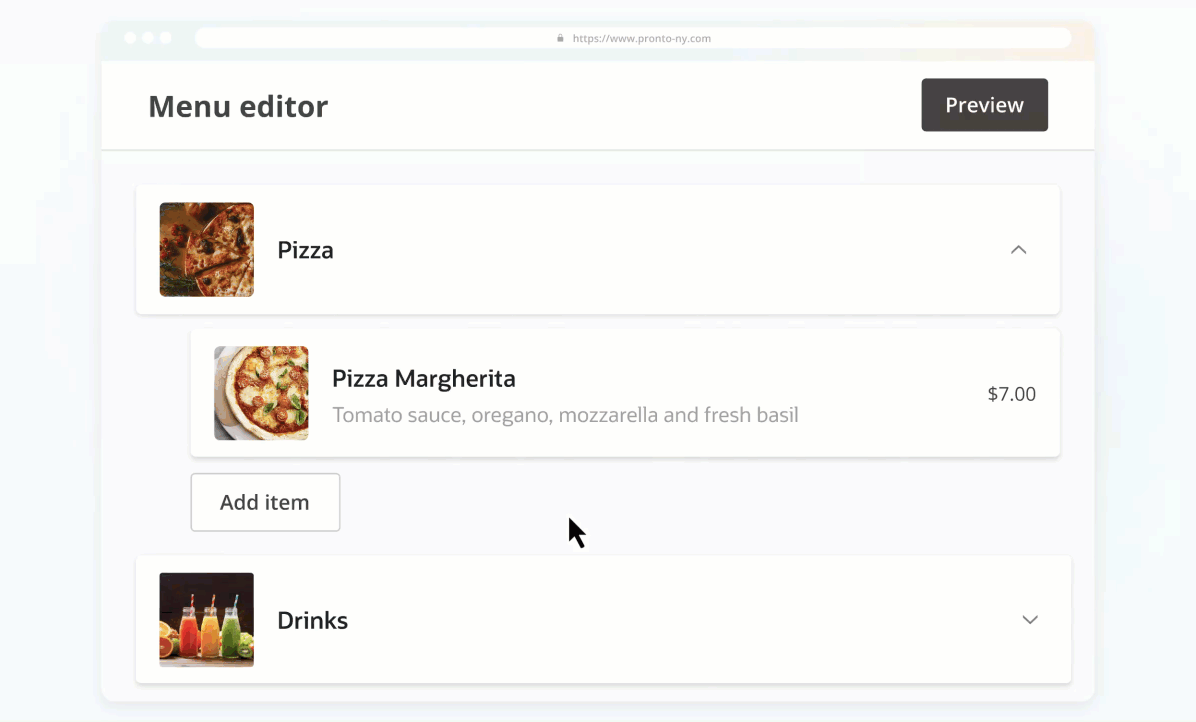
A QSR restaurant menu is typically short and sweet, relying on only a few ingredients. It also usually provides menu and bundle options that customers can combine to create their desired meal.
Here are some QSR menu ideas to help you attract a wide audience and cater to varied tastes:
- Incorporate healthier options such as vegan or vegetarian dishes;
- Provide nutritional information and a list of allergens;
- Rely on seasonal ingredients to lower food costs and keep your menu fresh;
- Focus on dishes that are fast and easy to prepare to lower customer wait times;
- Keep the menu new and exciting with limited-time menu items or promotions;
- Keep a close eye on your POS reports to ensure you only keep the items that bring in sales.
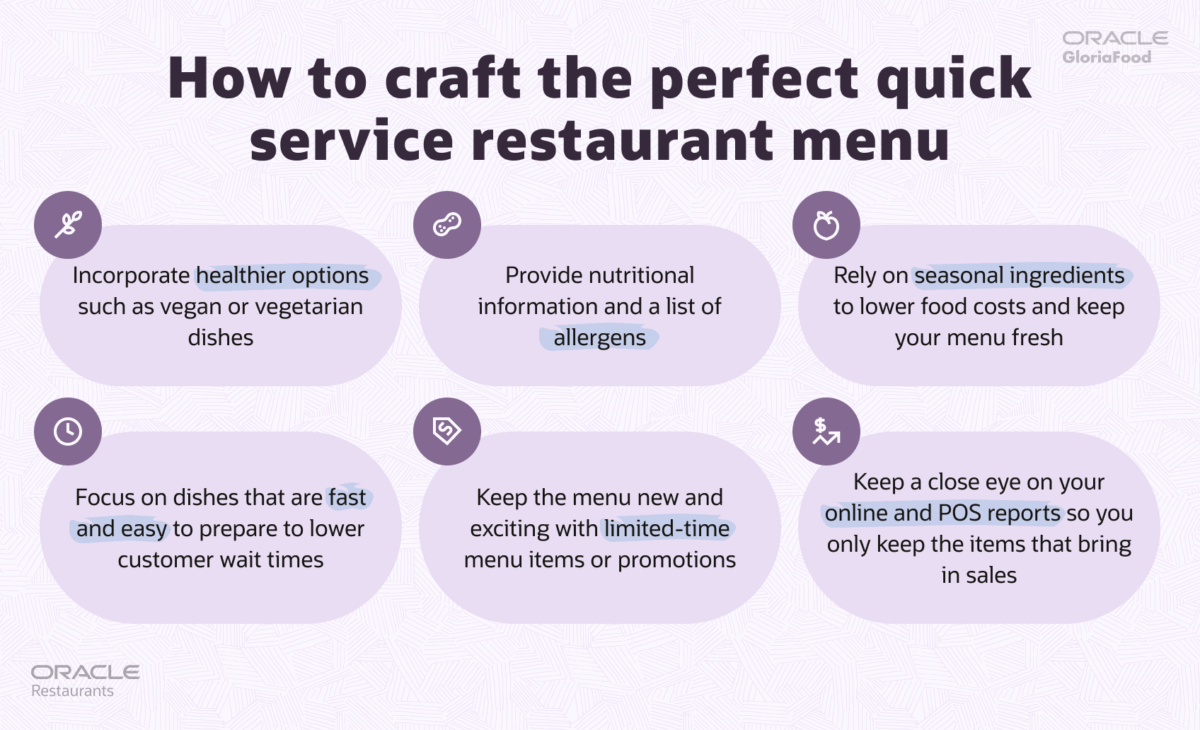
Ideally, to keep up with the fast-paced quick service industry, you should look into quick service restaurant software that can help you stay ahead.
For example, you should enable customers to order and pay by scanning a QR code.
Here’s why replacing paper menus with QR code menus is the way to go when you learn how to open a quick service restaurant:
- Faster ordering & checkout process;
- Lower wait times;
- Faster table turnover;
- Serve more customers daily;
- Improve the customer experience;
- Make unlimited changes to the menu instantly without having to reprint them.
With GloriaFood, you can create your quick service menu in minutes using our intuitive menu editor. You can add:
- Menu categories & items;
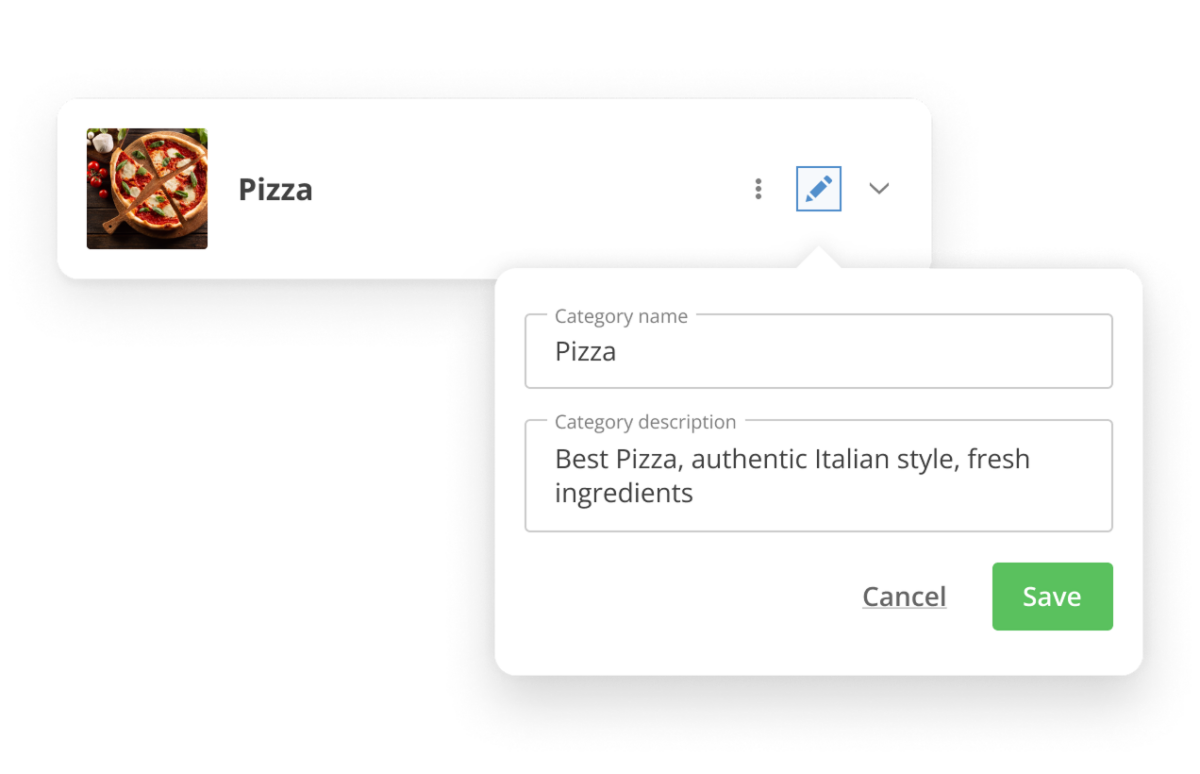
- Add-ons such as toppings, crust types, sauces, etc.;
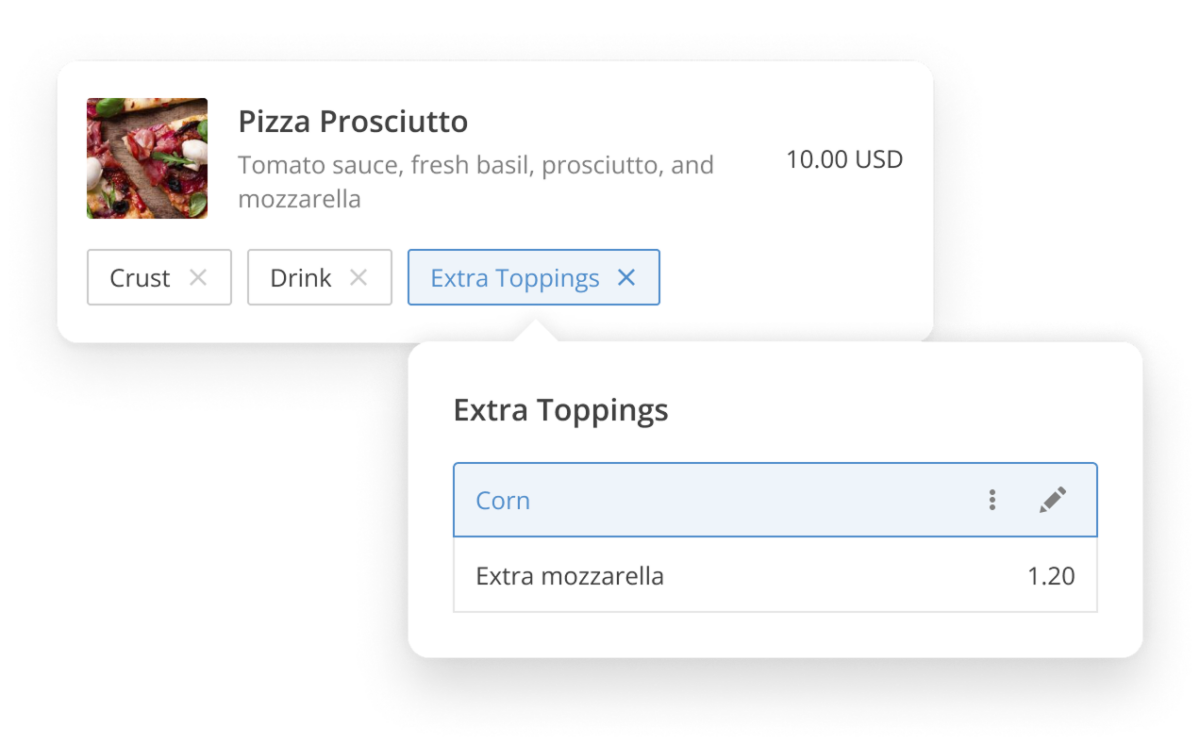
- Choices such as adding fries to a burger;
- Ingredients for every dish;
- Nutritional information and menu labels;
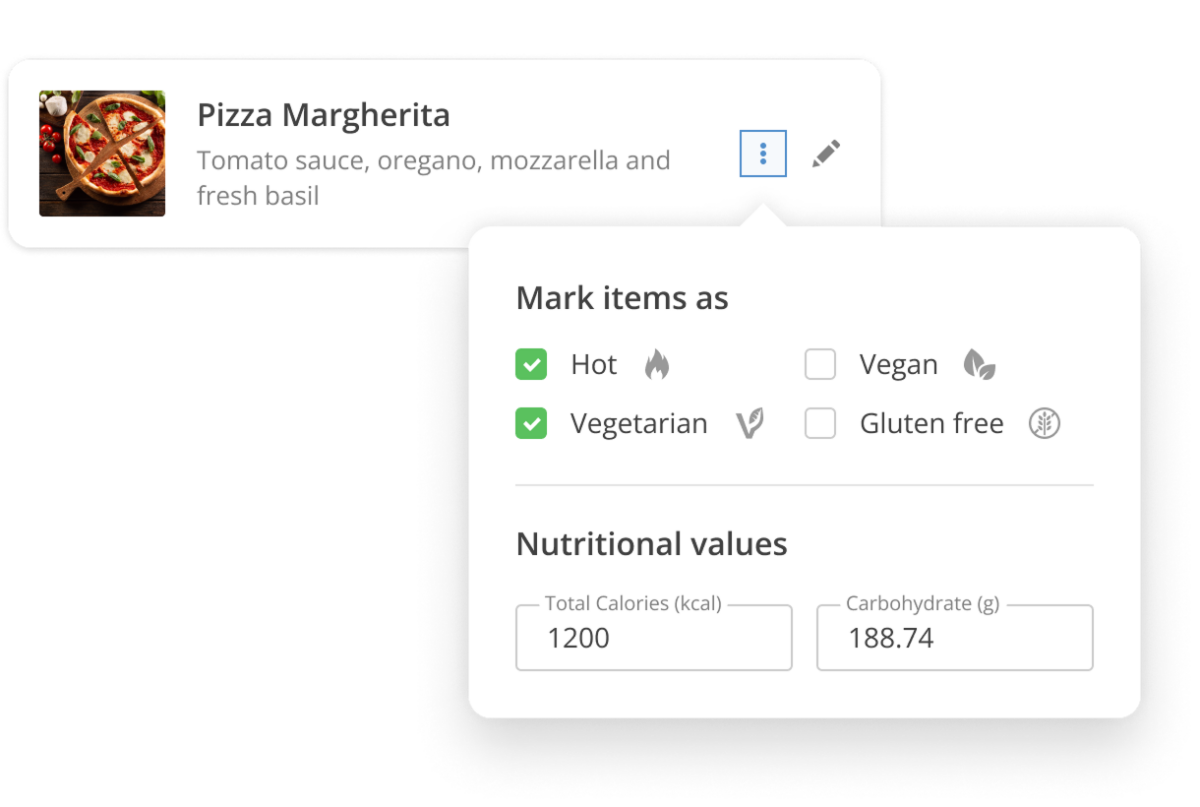
- Allergens;
- Menu bundles and combos;
- Menu item stocks so you can easily keep track of inventory;
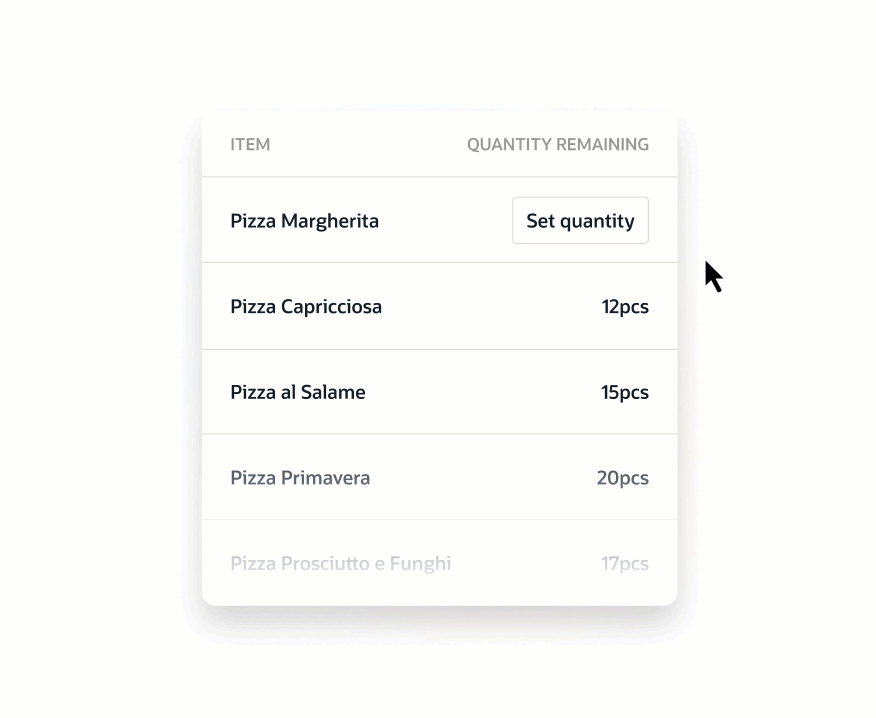
Once you’ve created the perfect menu, simply generate the QR code following our simple setup wizard, display the QR codes on the tables, and you’re ready to accept your first order.

This is how ordering and paying will look for your customers:
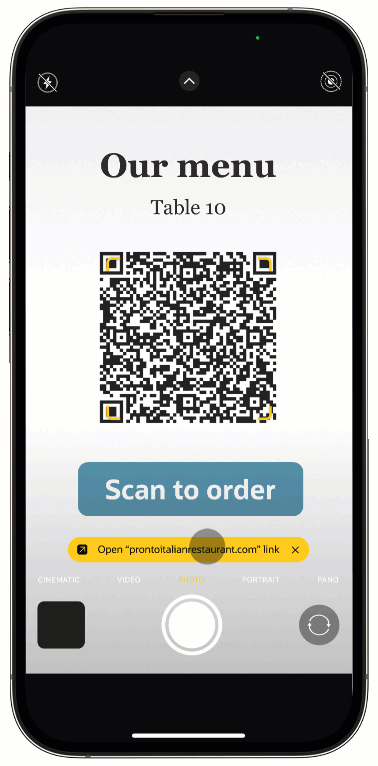
6. Get an affordable quick service restaurant POS

When it comes to quick service restaurant technology, a POS should be at the top of your list.
The GloriaFood quick service restaurant POS software is designed to address the pain points of a fast-paced environment with features such as:
- Color-coded menu categories that make it easier for your staff to operate the POS;
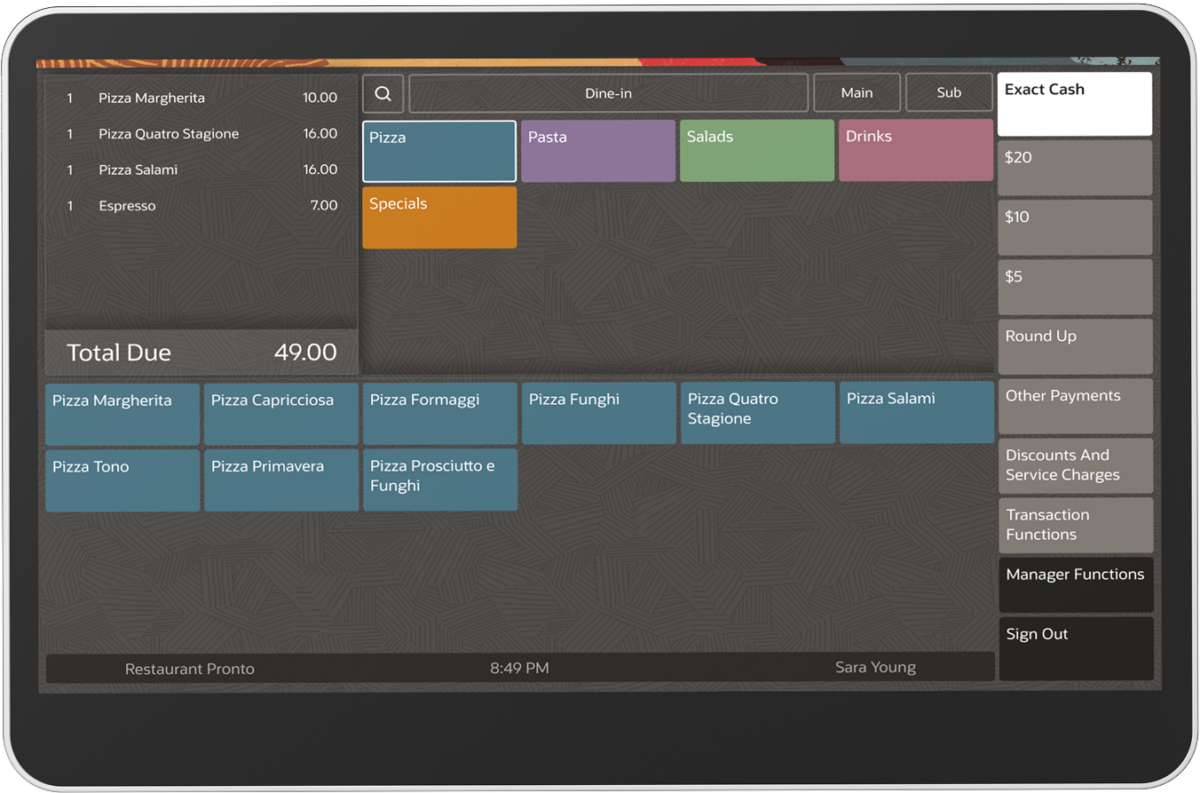
- Fast payment processing for any type of payment, from credit and debit cards to digital wallets;
- Built-in online ordering so you can manage both in-store and online orders on the same device. Online orders are automatically sent from the POS to their designated kitchen stations, so the chefs can start cooking immediately.
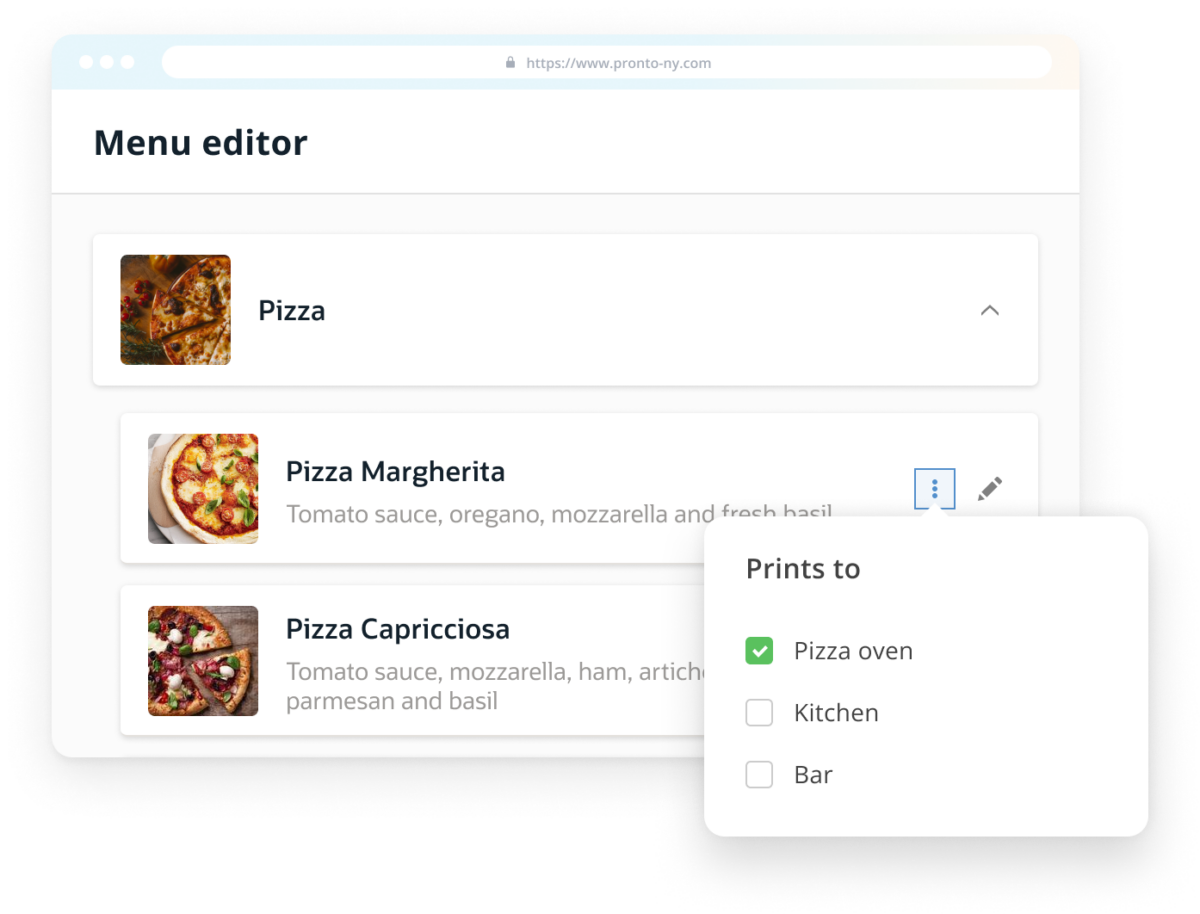
- Offline mode so you don’t miss a beat even when the internet is down. You can continue to open and close checks, process payments, and run reports, even when you’re offline.
- Easy printer management that allows you to connect multiple printers and assign them to different kitchen stations. This will help you optimize communication between front of house and back of house;
- Intuitive POS gestures designed to speed up check actions such as:
➡️ Swipe to remove a menu item
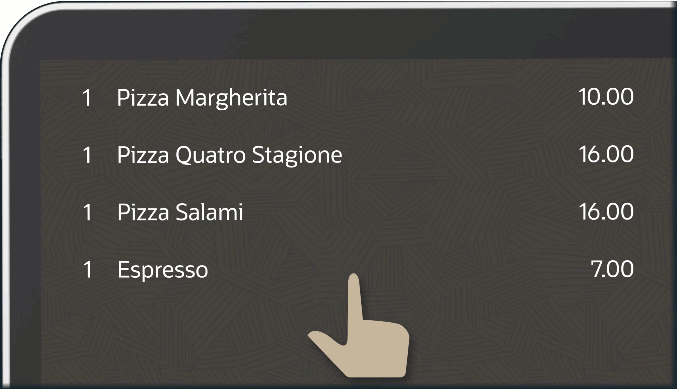
➡️ Click to increase the quantity
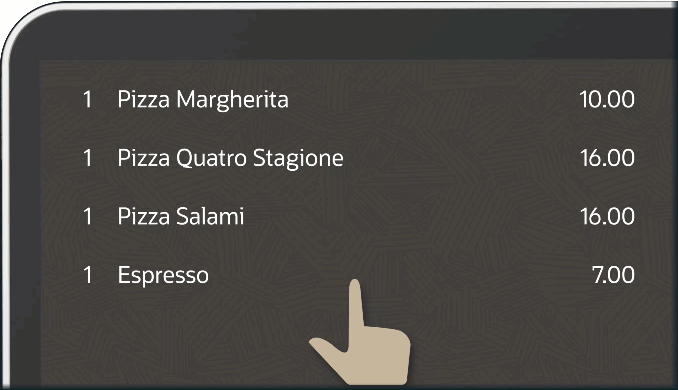
➡️ Click and hold to reset the quantity

Save up to thousands of dollars on your POS hardware
With GloriaFood POS, you pay an affordable monthly subscription, and $0 on the hardware starter kit.
I want my QSR POSCurious to find out more? Check out this complete restaurant POS system guide.
7. Hire a dream team
Your staff is at the heart of your restaurant. Whether they prepare the delicious dishes that customers rave about, or they interact with your clients every day, you need people you know you can count on.
The restaurant industry is facing high turnover rates, with many employees being dissatisfied with what restaurants have to offer in terms of salary and benefits.
If you want to attract quality employees who will be with you for the long haul, consider offering these benefits when you put together a plan on how to start a quick service restaurant:
- Health insurance;
- Opportunities for development within the restaurant;
- Incentives for a job well done;
- A good work-life balance;
- Free or discounted food from the restaurant;
- Dedicated employee training materials;
- Team building events.
Here are some additional tips that will help you hire your dream team:
- Host a recruitment event or attend a job fair to find candidates. You can set up an interactive test with stations that simulate different restaurant roles, such as a kitchen for chefs. This way, candidates can showcase their skills first-hand.
- Create engaging social media posts that contain videos showcasing your restaurant and highlighting the top perks of working there.
- Conduct group interviews with employees who need to work together. This way, you can observe their interactions and teamwork. Simulate real-life scenarios and set challenges that they need to overcome together.
- Provide trial shifts. This enables potential hires to work alongside your existing team for a few hours so that both parties can assess if they’re a good fit.
Once you hire the perfect team, the GloriaFood POS can help you manage and train them without breaking a sweat thanks to these handy features:
- Employee access: Set different roles & responsibilities according to job titles;
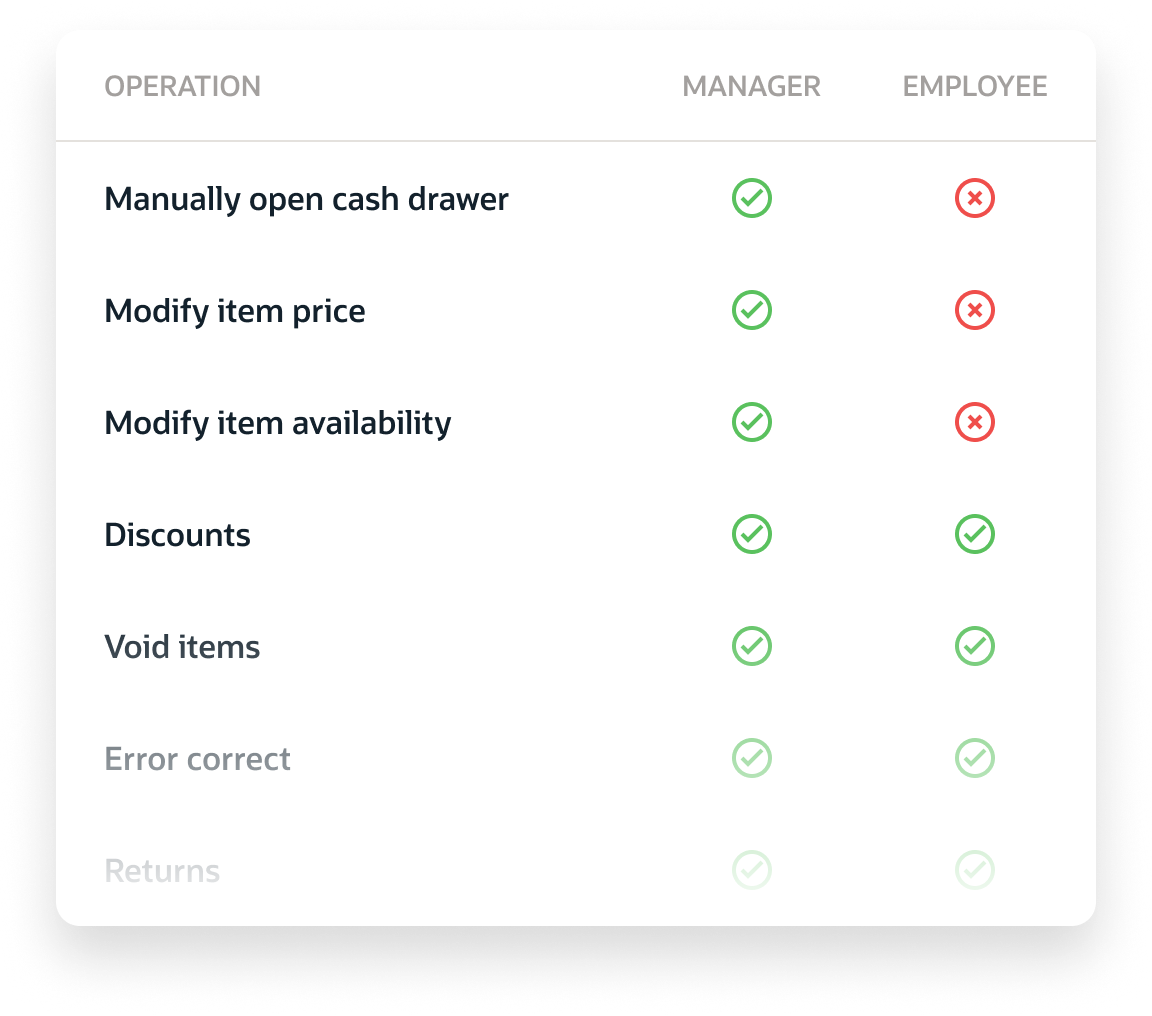
- Easy staff management operations: Add new staff members, update employee roles, or remove employees in just a few taps;
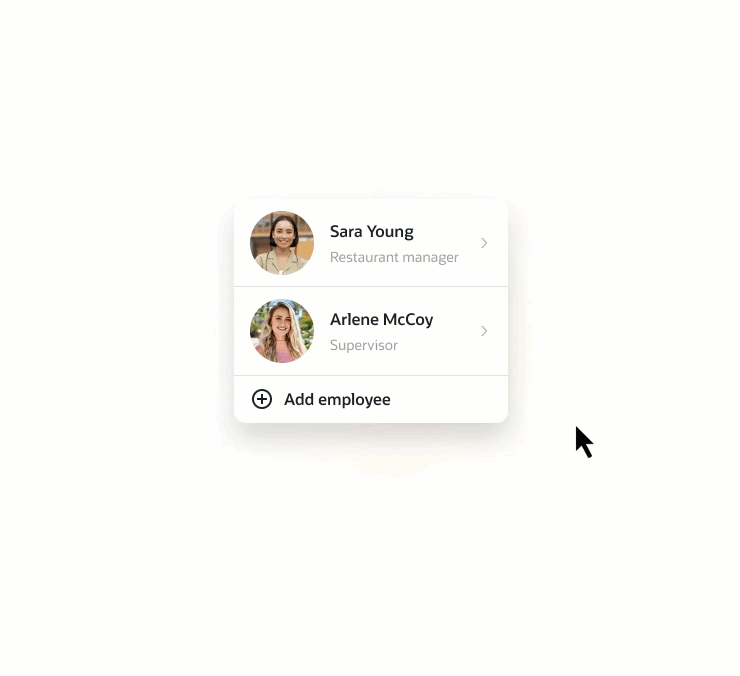
- Training mode: Enable new employees to learn the ropes and experience the POS without impacting your financials. When they’ve completed their orientation, simply disable the training mode.
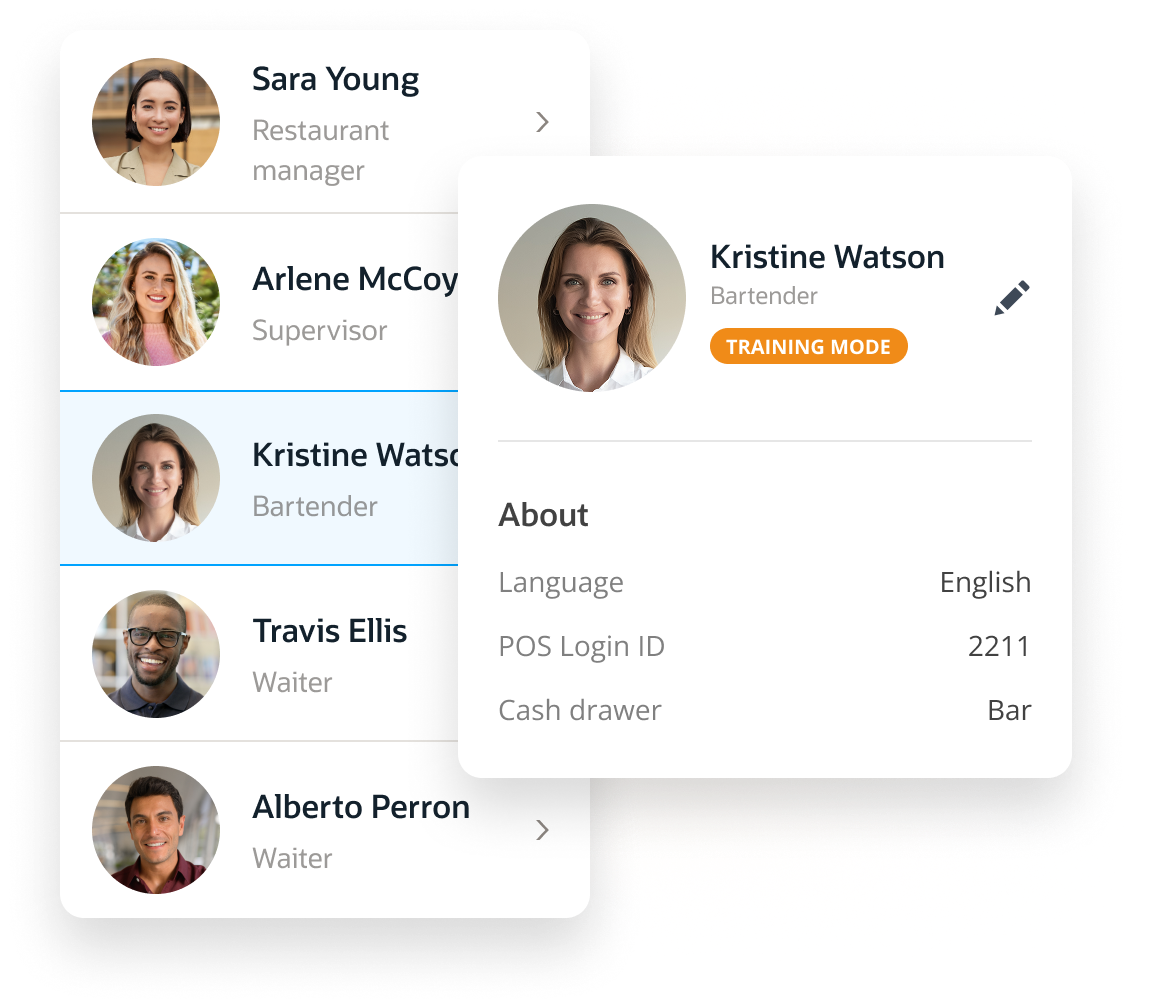
- Quick employee login: Thanks to the RFID key cards, employees can quickly log into the POS, so they can serve customers faster.
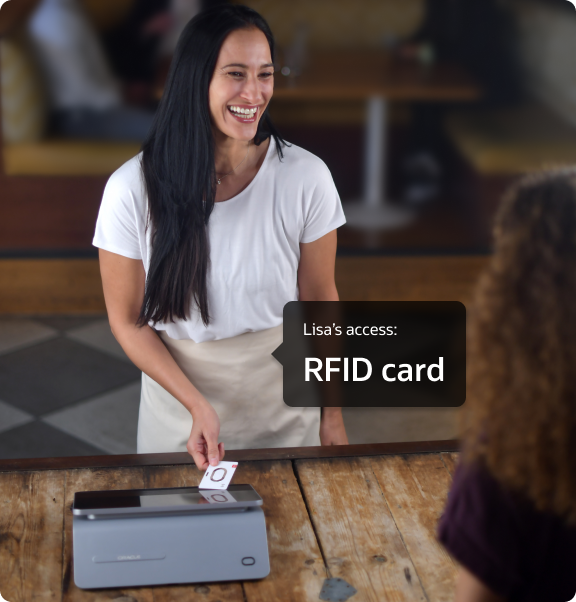
- Financial transaction reports: Keep a close eye on your staff’s transactions, from checks to payments or refunds. Every employee gets assigned a unique ID that you can check to get access to their transactions.
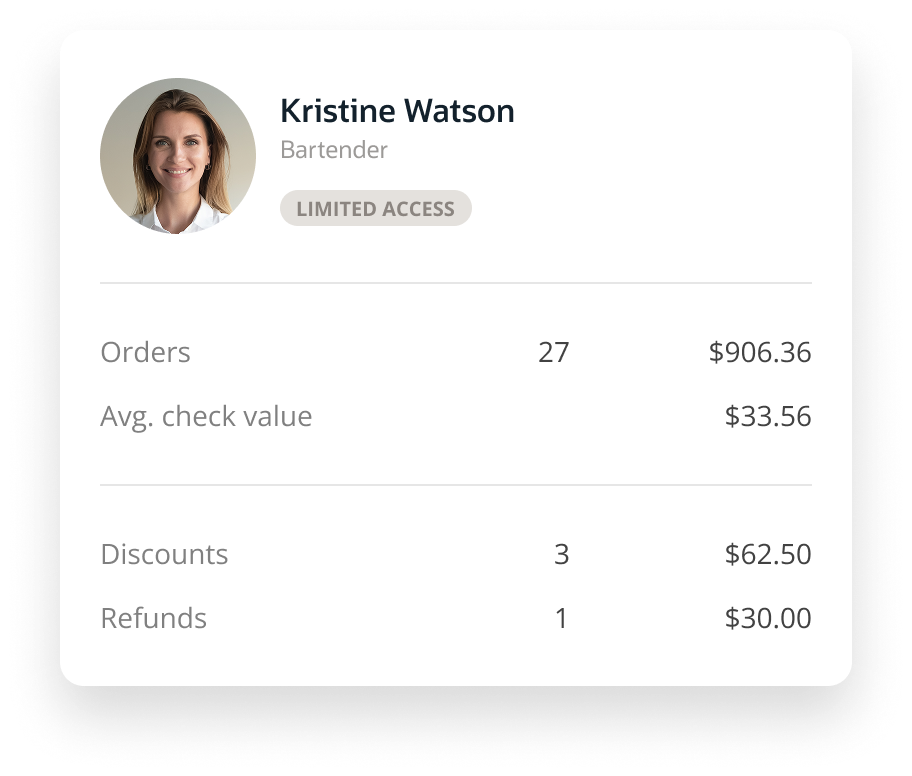
8. Purchase equipment and look for suppliers
As the grand opening approaches, it’s time to purchase all the equipment you will need for your quick service restaurant, such as fryers, grills, ovens, microwaves, toasters, cutting boards, knives, slicers, mixers, refrigerators, freezers, beverage dispensers, smallware, sinks, dishwashers, and cleaning supplies.
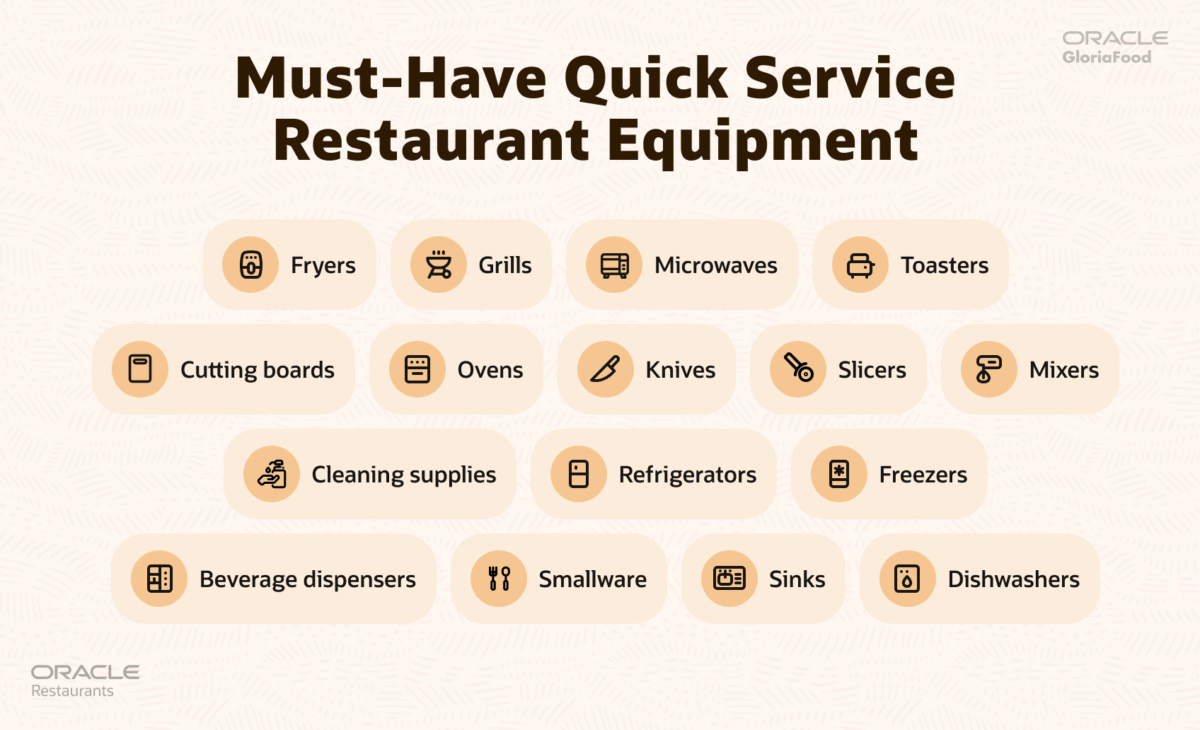
Next, think about where you’re going to get your ingredients and other supplies from. You should look for local suppliers first, for several reasons:
- Local ingredients will be fresher and cheaper;
- They will arrive faster;
- This will lower your carbon footprint, making your restaurant more environmentally friendly;
- Customers love restaurants that support the local economy.
We’ve put together some tips on how to find the best local suppliers for your QSR:
- Visit local farmers’ markets to find producers and artisans. From farmers to bakers, you can taste their products directly and inquire whether they supply local businesses like yours.
- Contact shared kitchens and food incubators to find local entrepreneurs who might be a good fit for your business.
- Join local food and beverage groups or associations and connect with their members. Attend networking events to build a relationship with potential suppliers.
- Check out review platforms like Google Business, Yelp, or TripAdvisor to explore their categories of food suppliers, specialty food producers, and wholesalers.
- Host a supplier open house where you invite local suppliers to showcase their products directly in your restaurant.
9. Set up pickup and delivery options
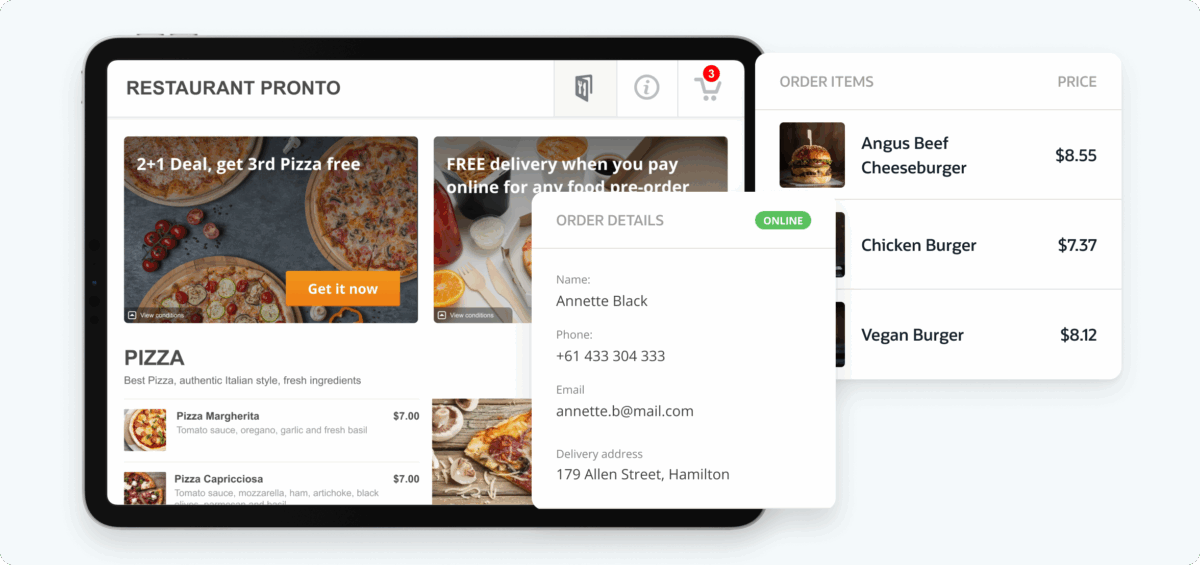
Nowadays, it’s difficult for restaurants to thrive by relying on dine-in sales only. That’s why most quick service restaurants also offer online ordering.
We have excellent news for you: You don’t have to look elsewhere to find an in-house online ordering system for your QSR. GloriaFood enables you to accept pickup and delivery orders on your website, at zero cost.
It’s as simple as adding a button on your website following this video tutorial, no tech knowledge required:

You can choose to accept orders manually by installing the free order-taking app on a mobile device, or you can set them to be automatically accepted by the POS and sent directly to the kitchen. Your call.
Pro tip: Speed up online ordering even more by allowing customers to pay for their food online by card or other digital wallets.
The Online Payment service also unlocks digital tipping. Studies have shown that customers tend to tip 11% more when tipping digitally. Here’s how easily you can enable this feature:
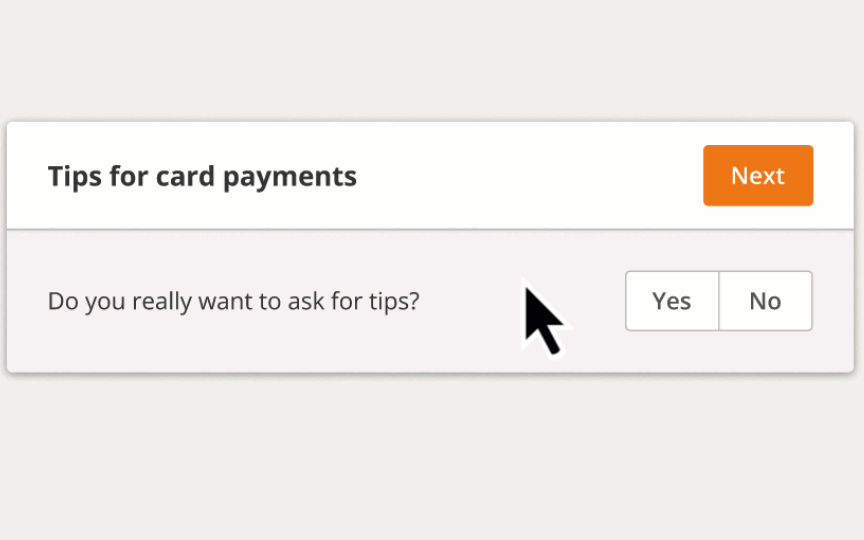
10. Put together a comprehensive QSR marketing strategy
Finally, before you start a quick service restaurant, you need to have a clear idea of how you’re going to market it online and offline.
Here are all the quick service restaurant marketing features you can enjoy as a GloriaFood customer:
- Ordering smartlink for social media: Simply add it in your bio to enable customers to order with just one click.

- Online ordering flyer generator: Create and print flyers with an exclusive offer and distribute them around the neighborhood to motivate more customers to place their first order online.
- Promotions module: Create any QSR promotions you can think of using our 13 built-in templates or setting up your own promo logic.

- Email marketing automation: Choose from the three campaigns designed to encourage second orders, engage dormant customers, and prevent cart abandonment. Once you set up the campaigns, they will run on autopilot with no effort on your part.
- Google Business Profile scanner: Put your restaurant on the map by creating a Google Business Profile and adding your opening hours, address, website, and more. In the GloriaFood dashboard, you can scan and analyze your Google Business Profile to find out what else you need to optimize to rank higher.
- Website builder with built-in SEO optimization: If you want more customers to discover your restaurant online and place an order, you can generate an SEO-optimized website designed to rank high in local searches.
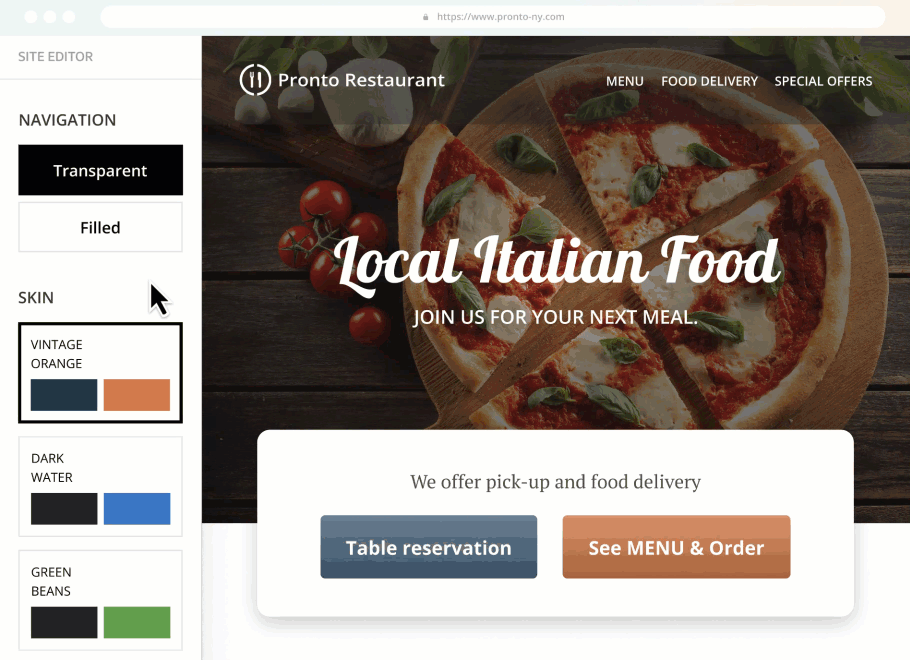
Additionally, here are some more creative ideas for your quick service restaurant marketing plan:
- Host a memorable grand opening event where you offer free samples of your dishes, special discounts, and limited-time promotions to attract a big crowd. Provide live music or organize fun activities to turn your grand opening into a real celebration.
- Run social media contests and giveaways to encourage user-generated content and increase engagement.
- Partner with local food influencers, bloggers, and vloggers so they can share their experience at your restaurant with their audience.
- Engage in the community by sponsoring local sporting events, donating to charities, or volunteering at the food bank with your employees.
- Offer seasonal and holiday promotions and special menus. For example, for Valentine’s Day, you can offer a free dinner for two, for Halloween, you can organize a costume party, or for Thanksgiving, you can offer discounts on family meals.
You’re Ready to Open Your Quick Service Restaurant
Now that you know how to start a quick service restaurant, you’re only moments away from the grand opening.
Once you have everything in place, from your menu to the technology you need to run like a well-oiled machine, organize a soft opening with friends and family. This will give you excellent insight into what works and what you need to improve before the big day.
What to Read Next:
Want to keep reading? Start by checking out our QSR marketing guide and other useful resources to help you build your food business from the ground up.
Frequently Asked Questions
Yes, quick service restaurants are profitable due to the small menus, low operating costs, minimal staff, low food costs, and high turnover rate.
Compared to full-service restaurants, QSRs have lower operating costs due to the simple service model and fewer staff. They also have higher margins due to lower food and labor costs and the opportunity to serve more customers daily.
The average profit margin for quick service restaurants is between 6 and 9%, which is higher than most other types of food businesses.
If you’re thinking of how to start a quick service restaurant, you need to be aware of the quick service restaurant industry growth.
A quick service restaurant industry analysis shows that the reason why QSRs are more profitable is because the food and labor costs are lower than, say, a table service restaurant.
According to quick service restaurant research, the industry was valued at $316 billion in 2024 and is poised to reach $384 billion by 2030, with a compound annual growth rate of 3.3%.
While there’s many factors that contribute to the success of a QSR restaurant, the most important one is consistency. Consistency is important both in terms of food and service quality because it can help you attract recurring customers and build brand loyalty.
Customers have certain expectations when visiting their favorite restaurant, and providing them with reliable, consistent service is the key to ensuring they come back time and again.
The staff turnover rate for QSRs ranges from 130% to 150% annually, which is notably high for the food and beverage industry. Here are the main reasons why the turnover rate is so high:
- Young workforce, typically under 25, who may view their job as temporary.
- Long and irregular hours, coupled with potentially low pay.
- Competition from other industries that may offer more opportunities.
A good food cost percentage for QSR restaurants is between 25% and 35%, which allows restaurant owners to be profitable while having enough budget for other expenses like rent, utilities, and labor.
These factors will impact your food cost percentage:
- Suppliers: The cost and the quality of the ingredients can significantly lower or increase food costs.
- Pricing: To ensure profitability, you need to set your menu prices in line with the food costs.
- Menu: A simpler menu will lead to lower food costs.
- Portions: The bigger the portions, the higher the possibility of food waste, which can lead to higher costs.
Dominant trends in the quick service industry in 2025 include:
- Incorporating more health-conscious and culturally inspired menu items.
- Focusing more on pickup and delivery services.
- Offering more loyalty programs, especially digital ones.
- Focusing on sustainability practices.
- Integrating AI to offer a more personalized and efficient service.
- 1. Do market research and compile a solid business plan
- 2. Obtain financing
- 3. Find the perfect location
- 4. Acquire all the licenses and permits you need
- 5. Create a winning quick service restaurant menu
- 6. Get an affordable quick service restaurant POS
- 7. Hire a dream team
- 8. Purchase equipment and look for suppliers
- 9. Set up pickup and delivery options
- 10. Put together a comprehensive QSR marketing strategy
- Useful Resources
- Frequently Asked Questions
Get your restaurant POS system
More than [[restaurants_number]] customers have advanced their restaurant businesses with GloriaFood
